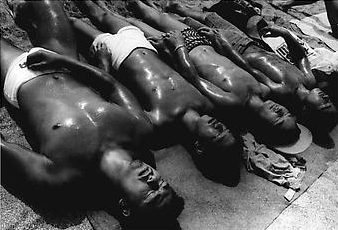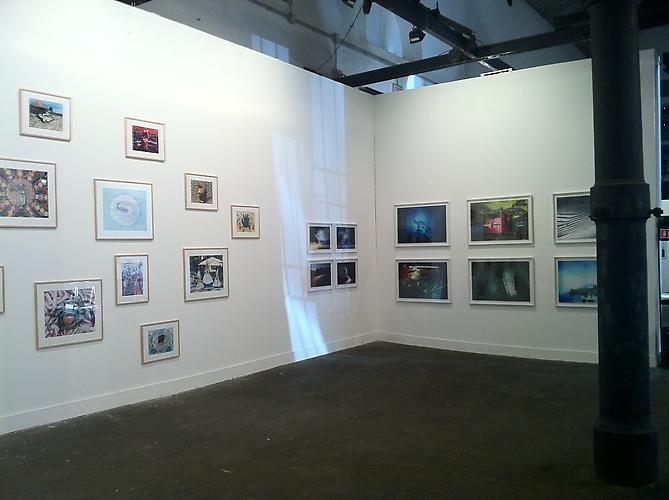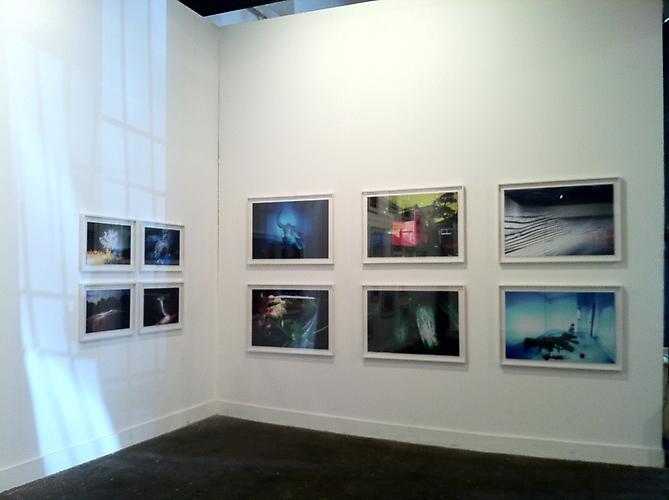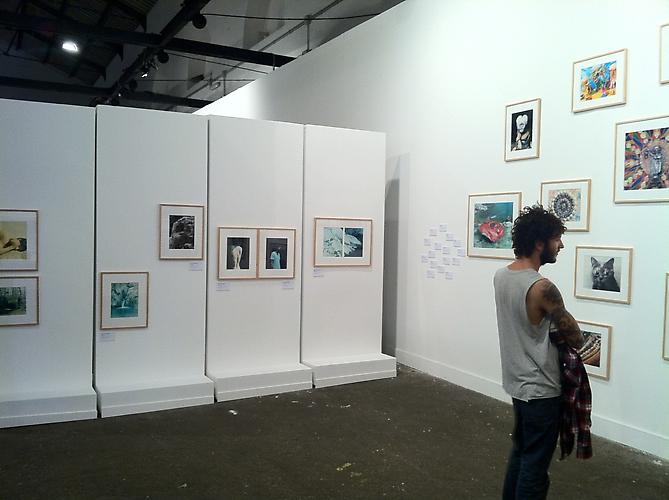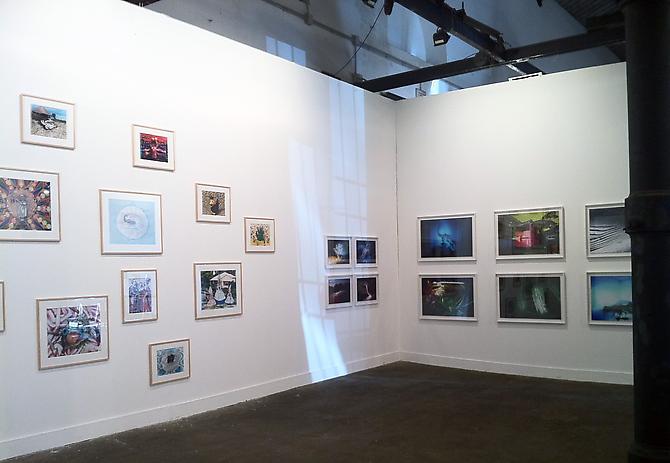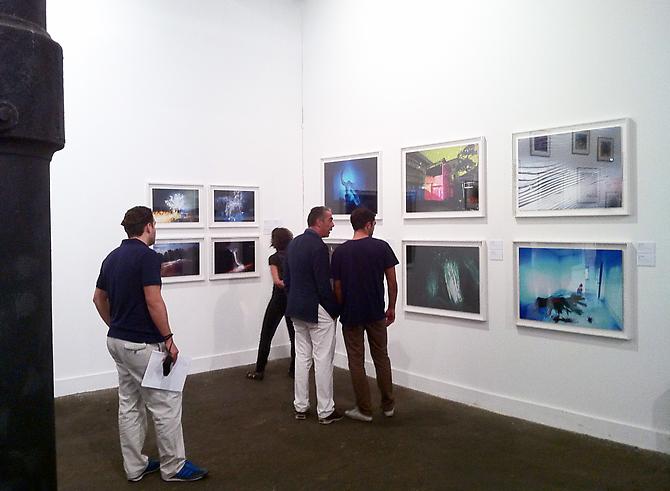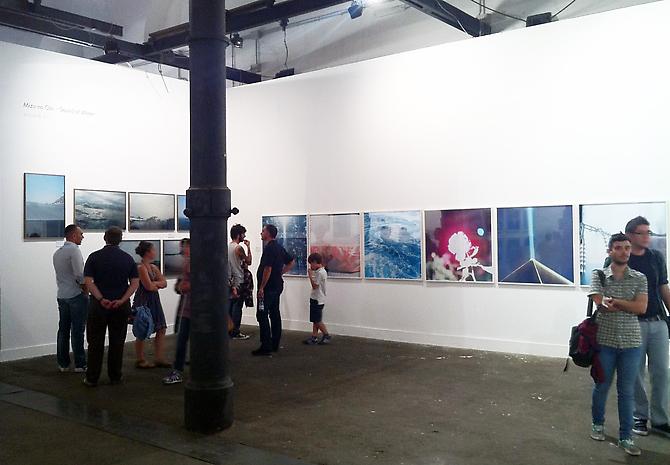DAIDO MORIYAMA, “Daido Moriyama”
DAIDO MORIYAMA
Daido Moriyama
November 10th – November 13th, 2011
Daido Moriyama was born in Ikeda in the Japanese prefecture of Osaka in 1938. After training as a graphic designer and being stimulated to take an interest in the medium of photography by Takeji Iwamiya, he moved to Tokyo in 1961. He had planned to apply for a post with the VIVO agency based there, whose chief initiators included the photographers Shomei Tomatsu and Eikoh Hosoe. But as VIVO was at that time in the process of breaking up, Moriyama sought a different solution. He had the opportunity of working with Eikoh Hosoe, where he was primarily responsible for the publication of photographs. As he confirmed in one of his own articles, it is to Hosoe that he owed all the tools for his subsequent work. After three years, in 1964, he resigned his post with his great role model, and went freelance.
From then on he produced countless shots taken in the cities of Japan, which he combed on foot, or, à la Jack Kerouac, by car “on the road”, always with his hand-held camera. In rapid succession, the photographs bear witness to the virulent and unpredictable life of the streets, showing the contrasting mix of Asian-traditional and Western-modern, as well as a world of new media and liberal attitudes that was penetrating everyday life. The street-photographer Moriyama records all he encounters but pronounces no judgements; he looks into individual faces, sees geishas and street-girls, accompanies parades, notices architectural features and façades in seemingly random juxtaposition, peers into private niches or looks at film posters, slogans and advertising logos with their promises. While on the one hand the turbulence of civilization is reproduced, on the other Moriyama also wrests from this very turbulence, time and again in still-lifes and minute details as well as chiaroscuro depictions, calm, almost meditative moments.
If the imagery of Moriyama’s photographs is brusque, contrasty, out-of-focus and grainy, this is due on the one hand to his rapid style of shooting, often while he himself is moving, in which he often does not even look through the viewfinder, and on the other to his intensive work in the darkroom, during which he experiences the motifs once more and seeks to condense them. The shot of the Misawa “Stray Dog” (1971) is as it were a symbol, chosen by Moriyama himself, of his own œuvre: border-crossing, uncommitted, instinctive and highly attentive to atmosphere and detail. The act of taking a photograph as of post-processing can certainly be described as an existential necessity for Moriyama, to which he yields expansively and uncompromisingly.
We should not forget Moriyama’s early fascination with the works of the American photographers William Klein, Robert Frank and Weegee. In particular Klein’s book New York, first published in Japan in 1957, attracted the particular interest of the young Japanese photographer. In 1971, on a trip to New York. Moriyama was to go on to compose an image of the city that was both his own and yet related. Likewise of great importance was the Pop artist Andy Warhol, and here in particular his silk-screen prints for the Car Crashes (1963), which are directly adopted in Moriyama’s own 1969 series on the theme, titled Smash-Up. Another series, likewise influenced by Warhol, deals with the overcrowded yet stimulating world of commodities, with Coca-Cola and V 8 juice, was published in the influential and revolutionary photo-magazine Provoke (among whose founders was Moriyama’s friend Takuma Nakahira), which provided a striking forum for a confrontation with new aesthetic possibilities.
Daido Moriyama was born in Ikeda in the Japanese prefecture of Osaka in 1938. After training as a graphic designer and being stimulated to take an interest in the medium of photography by Takeji Iwamiya, he moved to Tokyo in 1961. He had planned to apply for a post with the VIVO agency based there, whose chief initiators included the photographers Shomei Tomatsu and Eikoh Hosoe. But as VIVO was at that time in the process of breaking up, Moriyama sought a different solution. He had the opportunity of working with Eikoh Hosoe, where he was primarily responsible for the publication of photographs. As he confirmed in one of his own articles, it is to Hosoe that he owed all the tools for his subsequent work. After three years, in 1964, he resigned his post with his great role model, and went freelance.
From then on he produced countless shots taken in the cities of Japan, which he combed on foot, or, à la Jack Kerouac, by car “on the road”, always with his hand-held camera. In rapid succession, the photographs bear witness to the virulent and unpredictable life of the streets, showing the contrasting mix of Asian-traditional and Western-modern, as well as a world of new media and liberal attitudes that was penetrating everyday life. The street-photographer Moriyama records all he encounters but pronounces no judgements; he looks into individual faces, sees geishas and street-girls, accompanies parades, notices architectural features and façades in seemingly random juxtaposition, peers into private niches or looks at film posters, slogans and advertising logos with their promises. While on the one hand the turbulence of civilization is reproduced, on the other Moriyama also wrests from this very turbulence, time and again in still-lifes and minute details as well as chiaroscuro depictions, calm, almost meditative moments.
If the imagery of Moriyama’s photographs is brusque, contrasty, out-of-focus and grainy, this is due on the one hand to his rapid style of shooting, often while he himself is moving, in which he often does not even look through the viewfinder, and on the other to his intensive work in the darkroom, during which he experiences the motifs once more and seeks to condense them. The shot of the Misawa “Stray Dog” (1971) is as it were a symbol, chosen by Moriyama himself, of his own œuvre: border-crossing, uncommitted, instinctive and highly attentive to atmosphere and detail. The act of taking a photograph as of post-processing can certainly be described as an existential necessity for Moriyama, to which he yields expansively and uncompromisingly.
We should not forget Moriyama’s early fascination with the works of the American photographers William Klein, Robert Frank and Weegee. In particular Klein’s book New York, first published in Japan in 1957, attracted the particular interest of the young Japanese photographer. In 1971, on a trip to New York. Moriyama was to go on to compose an image of the city that was both his own and yet related. Likewise of great importance was the Pop artist Andy Warhol, and here in particular his silk-screen prints for the Car Crashes (1963), which are directly adopted in Moriyama’s own 1969 series on the theme, titled Smash-Up. Another series, likewise influenced by Warhol, deals with the overcrowded yet stimulating world of commodities, with Coca-Cola and V 8 juice, was published in the influential and revolutionary photo-magazine Provoke (among whose founders was Moriyama’s friend Takuma Nakahira), which provided a striking forum for a confrontation with new aesthetic possibilities.

